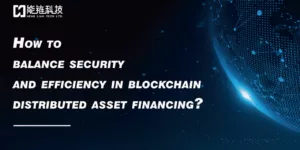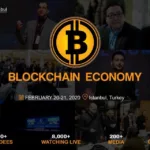Reporters of China Business Journal Jiang Muyun, He Shasha, reported from Shanghai.
In the Digital 2.0 era, the combination of “Internet of Things + Block Chain” has begun to attract people’s attention. In addition to the common product traceability function, this technology combination has also been applied to the financing and circulation of distributed assets. For example, the technology and financial services provided by Beijing Neng Lian Technology Co., Ltd. (hereinafter referred to as “Neng Lian Tech”) focus on small and scattered distributed assets.
Dr. Lin Le, founder and CEO of Neng Lian Tech, told China Business Journal recently that distributed assets with relatively stable cash flow are expected to be very suitable for de-centralized scenes. Due to the high cost of manual adjustment and post-investment management of such assets, financing costs are too high, and financial institutions have been unable to provide adequate financial services for them. Through the blockchain technology, the asset data can be uplinked to provide transparent data information for financial investors. On the one hand, it can reduce the cost of due diligence, on the other hand, it can also provide continuous, efficient and transparent post-investment management.
The third-generation consensus agreement xPoA provides a credible financial environment, Dr. Lin Le said, in the process of asset securitization or financial leasing, scattered assets must be packaged together. This means that due diligence audit and in view of such pain spots, blockchains and Internet of Things technology can be better solved. Neng Lian Tech relies on the third generation consensus protocol xPoA independently developed to form its own main chain bottom structure. On this basis, through two smart contracts, it achieves transparent, visual, reliable and credible capital supervision and allocation.
Decentralization of blockchains makes information traceable and tamper-proof. In the past, a centralized database is needed to collect data, but the data can be changed in the database.
For example, Neng Lian Tech is currently cooperating with financial leasing companies and robotic enterprises, relying on the Internet of Things to uplink the production data and rental income of robots, to increase the credit of their daily actual workload, but also to provide a trustworthy, transparent and intelligent cash account management for the value contribution of the entire business process. It has changed the situation that although the rate of return on robotic assets is high, the allocation of institutional capital can not be invested because of the high cost and low efficiency of auditing. Nowadays, financial institutions can make great strides in the implementation of such assets to increase production and expand the implementation process and obtain an objective income distribution.
The above commercial application scenarios put forward higher requirements for the bottom technology of blockchain. According to the calculation, TPS needs to be over 300 to meet the requirements of commercial landing.
Traditional bitcoin and Ethernet TPS are below 100, which can achieve security and fairness, but lose efficiency.EOS’s DPOS consensus algorithm can solve the efficiency problem, but there are some deficiencies in security and fairness. DPoS is based on 21 fixed accounting nodes, and TPS can reach thousands. However, because the accounting node is fixed and open, once a node is attacked, it is easy to create risks.
So, how can we balance safety, fairness, and efficiency? Dr. Lin Le said that Neng Lian Tech has developed its own main chain bottom technology. The main chain of Neng Lian Tech R&D adopts xPoA consensus algorithm: One hundred reserve nodes are selected in advance. When the reserve nodes are out of the block, the blocks and verification nodes are selected through the random number algorithm. Consensus is reached based on the BFT consensus engine. In this way, the efficiency will be higher due to fewer nodes, and the problem of safety and fairness can be solved by randomly selecting nodes each time. At present, the TPS measurement of this algorithm is about 2000.
Prospects and challenges coexist
In the process of commercialization of blockchain technology, the industry has also discussed the necessity of decentralization. In this regard, Dr. Lin Le believes that decentralization is not an end, the real purpose is to improve efficiency, decentralization is only a method. So for now, many things are done more efficiently by centralized organizations. For example, in the short run, AI and people must cooperate with each other, while decentralization and centralization are also the same. In the short run, it seems that centralization and decentralization structure coexist for a long time. Slowly with the progress of science and technology, more and more scenes are suitable for de-centralization.
Therefore, it is very important to find the appropriate scene for the subject of blockchain technology. For example, a stock exchange that trades shares has a good user experience and a sufficient trust base, so it does not need to be decentralized. However, in some marginal areas of finance, such as the financing of distributed assets, a low-cost credit environment is needed, which needs to be decentralized to a certain extent.
With regard to the future of blockchain technology, Dr. Lin Le believes that in the Digital 2.0 era, the three most important technologies are the Internet of Things, artificial intelligence and blockchain. The data are production data. The Internet of Things collects data, and AI feedbacks the data as a production tool. Blockchain is a production relationship, which is a collaborative relationship to reshape the whole digital world. That is to say, blockchains will be the bottom architecture of the future digital world, with great potential.
Dr. Lin Le makes a vivid analogy: Token, as a trading unit of blockchain, is like a small boat carrying value, and blockchain is the ocean. Small boats circulate efficiently in the ocean. Therefore, the blockchain is an efficient value circulation network, as well as a reliable cooperation mechanism and allocation mechanism.
Corresponding to the broad future, the blockchain is also facing many challenges. Dr. Lin Le said that one is that the technology of blockchain itself still needs to break through, and the current trading performance needs to be strengthened. Secondly, the transformation of thinking mode needs the process of market education. The third is the paradigm conflict. The decentralized distributed network will inevitably bring challenges to the benefits of the original centralized organization. Fourthly, it is the moral hazard. Because technology is neutral and blockchain is the bottom technology, it is very difficult for ordinary people to distinguish true and false information. In particular, for an emerging industry, once a negative event occurs, it will have an impact on the entire industry, so this area also needs to be strengthened regulation.








